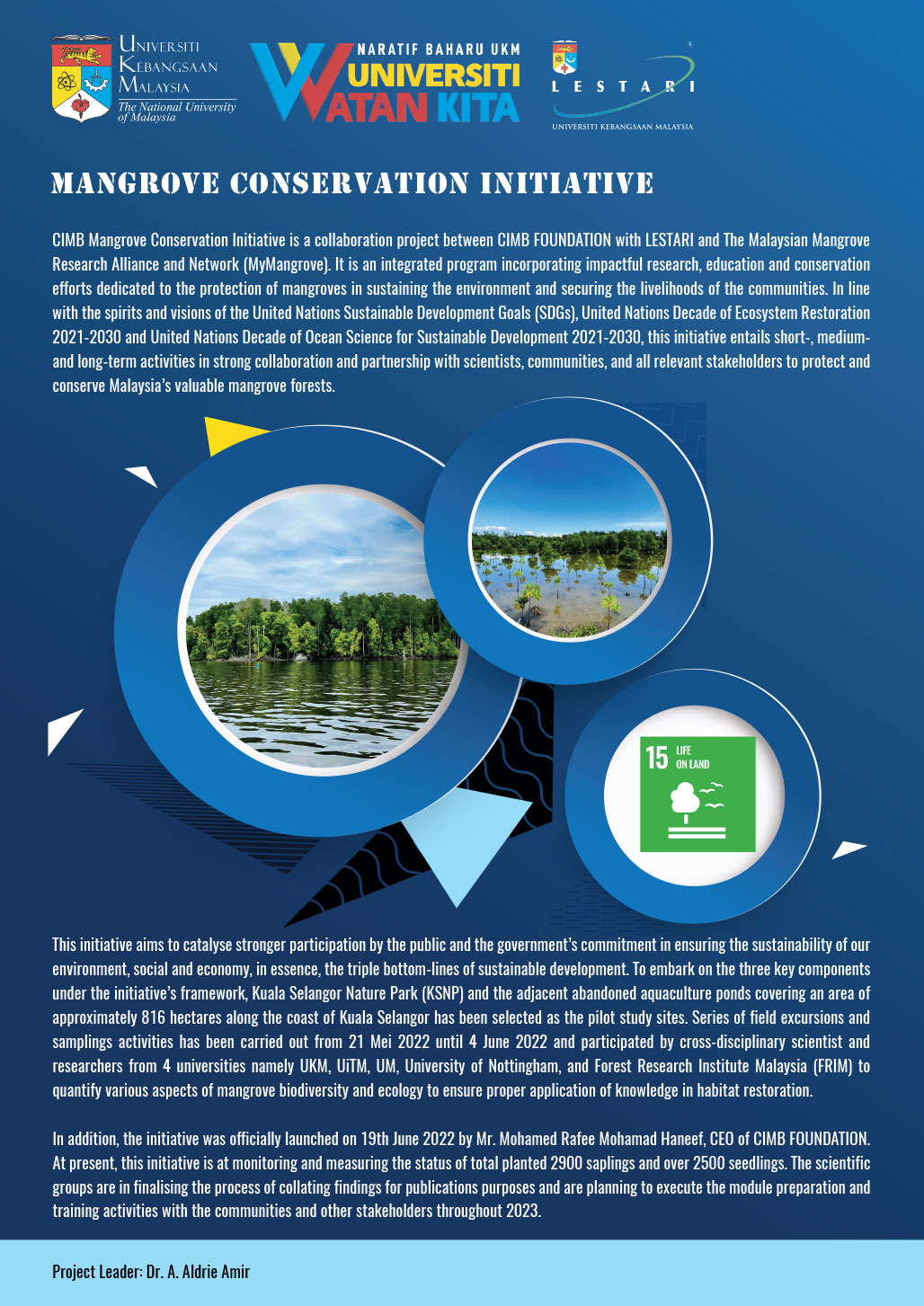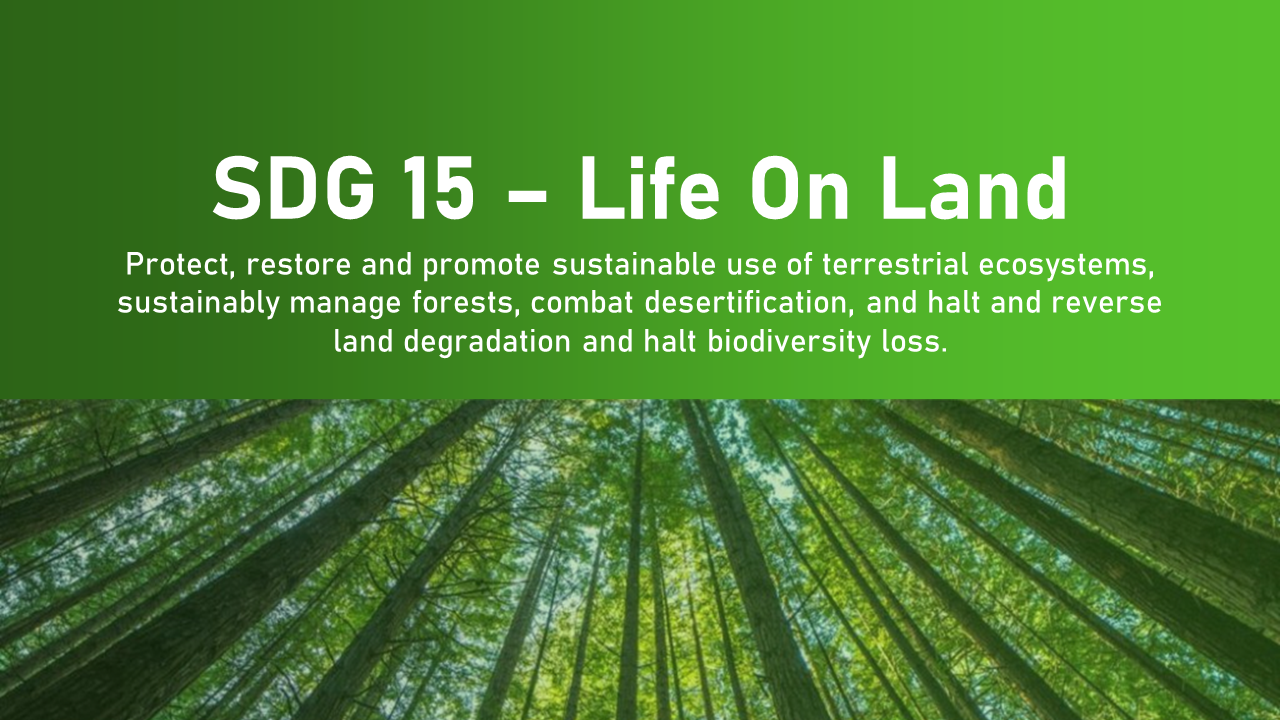
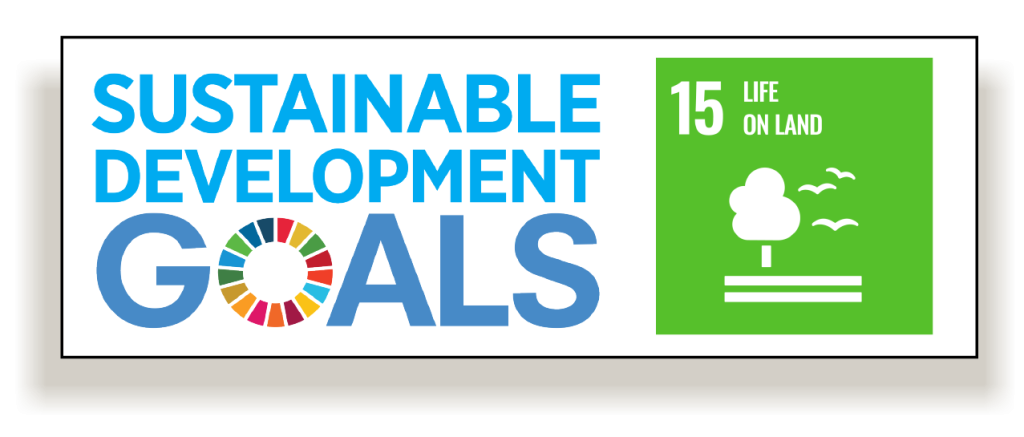
Maintain and extend current ecosystems’ biodiversity
UKM has campus programs for the conservation of plant (flora), animal (fauna), or wildlife, genetic resources for food and agriculture secured in either medium or long-term conservation facilities. In UKM, we have established four living labs as UKM’s efforts for conservation. In addition to this, conservation efforts are also done in the Faculty of Engineering and Built Environment Lake, Pendidikan Alam Forest, Botanical Garden UKM (Taman Botani UKM) that is equipped with a plant house (Rumah Tumbuhan) and Green House (Rumah Hijau).
Living labs in UKM
1. Langkawi Research Center in Langkawi, Kedah
Langkawi Research Centre (PPL) is located on the Campus of Tuanku Abdul Halim Mu’adzam Shah, Langkawi UNESCO Global Geopark. PPL is a focused center in the Institute for Environment and Development (LESTARI) UKM, with roles to carry out research and academic services related to integrated heritage conservation and development of geoparks.

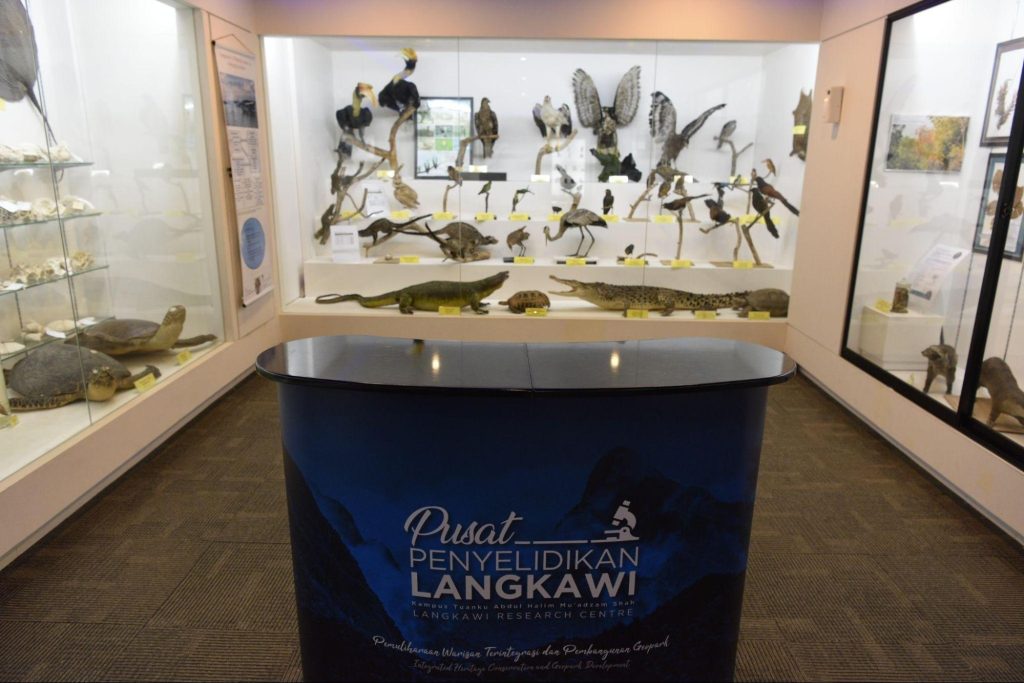


2. Bukit Fraser Research Center (PPBF) in Bukit Fraser, Pahang
Universiti Kebangsaan Malaysia (UKM) has established a research center in Fraser Hill, better known as RESEARCH CENTER BUKIT FRASER SMEs (PBF) in 1990, following the delivery of a piece of land from the Pahang State Government in 1989 with an area of 45 hectares and began to explore the research in Fraser Hill that is environmentally sensitive areas. These include riparian forest edges, valleys, rivers and ridges.
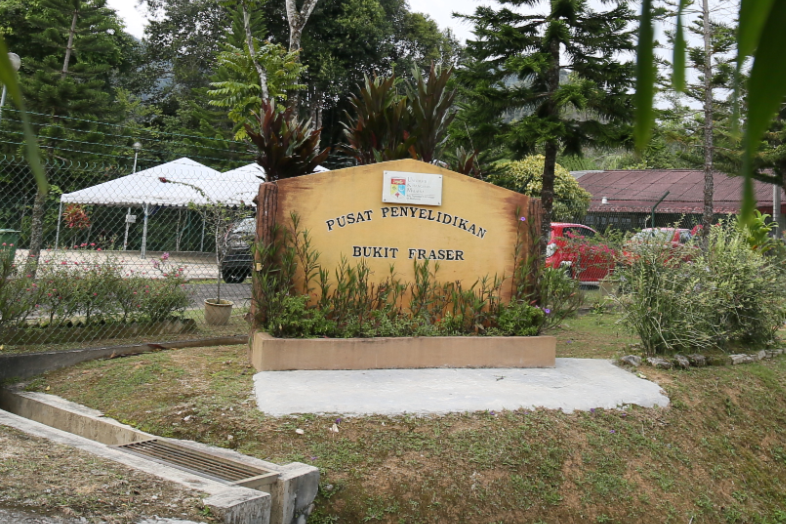



Pendidikan Alam Forest
Pendidikan Alam Forest (HPA) which aims to maintain the greenery of flora and fauna and nature. HPA is very suitable for camping activities and rugged activities that are based on forests with a challenging landscape. Located inside the UKM campus, Bangi and is part of the UKM Permanent Forest Reserve. On the south side is the PORIM-UKM palm oil plantation, on the east side there is the Animal House, Experimental Plot and Greenhouse, FST. While the Bangi Permanent Forest Reserve on the West side connects the HPA. The distance from the main entrance to HPA is approximately 4Km and is connected by a perfect road system.




Botanical Garden UKM
1. Plant House Complex
Plant House Complex consists of several main sections including a farm, a greenhouse, a nursery and a research laboratory. There are 25 farm plots labeled starting from farm A to farm Y. These Plant House Complex are suitable for planting fertigation crops, growing vegetables, raising livestock and so on. In addition, there are 5 units of greenhouses and each of these greenhouses has a different “rolling bench”, for example 27 units that can hold as many as 1080 seedlings. In addition, the nursery at the Taman Botani UKM focuses on the reproduction of seedlings of herb trees, decorative trees, kitchen garden trees, fruit trees and various species of forest trees. Various research laboratories located in the Plant House Complex. The research laboratory covers research fields in the study of plant pathology, plant engineering, plant anatomy, plant molecules etc.
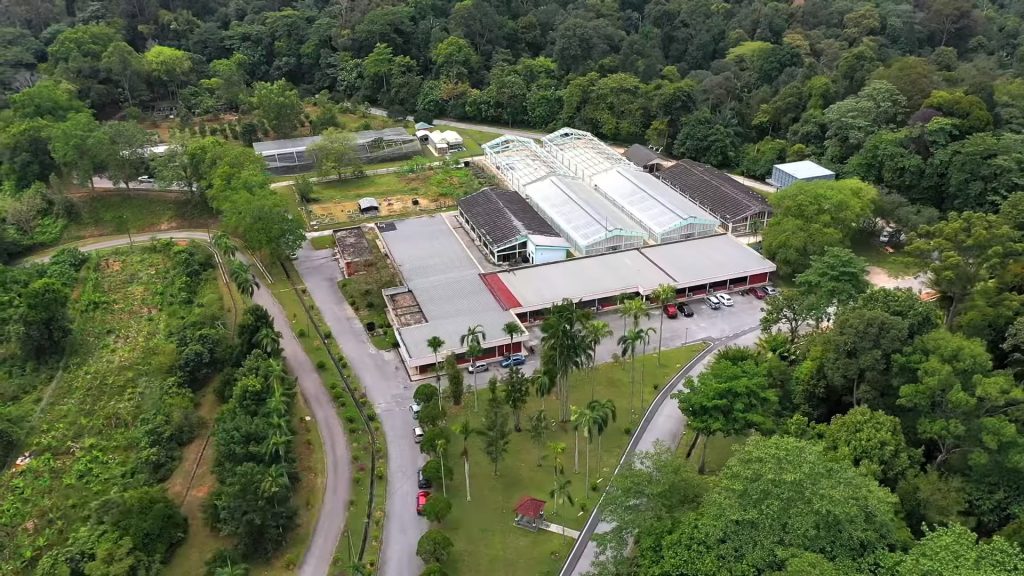

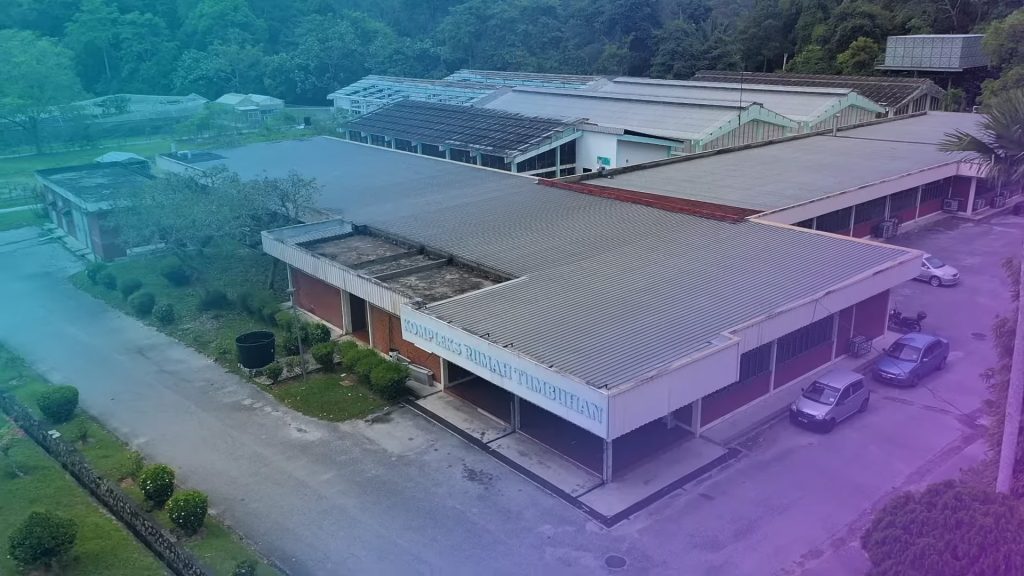
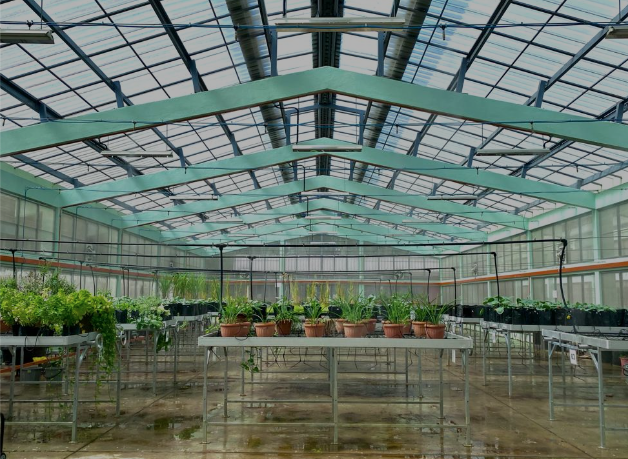
2. Fern Garden UKM
Taman Paku Pakis UKM (TPPUKM) or Fern Garden of UKM (Fernarium) is the first fern garden created in Malaysia. It was established in 1988 in a 13-hectare hillside area that was previously earmarked as an arboretum site. This Fern Garden has also been registered and recognized by Botanic Gardens Conservations International (BGCI) at the International Union for Conservation of Nature Resources (IUCN), Kew, United Kingdom. The park is divided into three main sections namely ethnobotany, conservation and exotic, and also has six paths through a diverse collection of ferns consisting of 46 genera and 25 families of pteridophytes. The richness of flora and fauna in this park has attracted many researchers and students to study and learning their habits, physiology, interactions and chemical content. Therefore, the conservation of this park is important for the sustainable biodiversity of the area.


3. Herb garden UKM
Taman Herba or Herb Garden was created at UKM for the purposes of education, learning, research, conservation and awareness for the public and for future generations. This two-acre (0.8 hectare) Herb Garden has about 450 species of plants from families such as Zingiberaceae, Rutaceae, Euphorbiaceae, Rubiaceae, Acanthaceae, Annonaceae, Apocynaceae, Piperaceae and many more. The Herb Garden was established in November 2009, located next to the FST Fern Garden and close to the Plant House Complex.

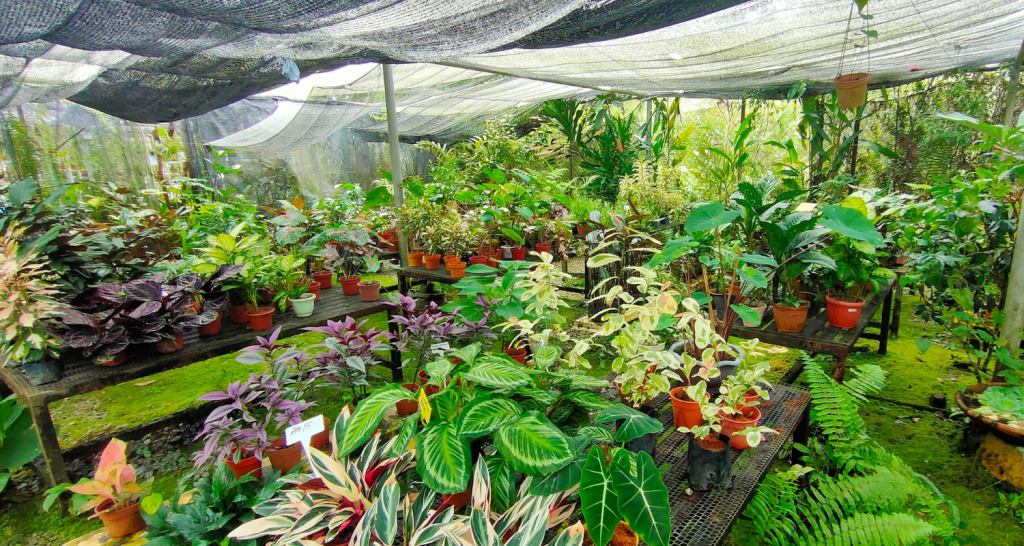
4. Bangi Permanent Forest Reserve
Bangi Permanent Forest Reserve was gazetted in 1906 and handed over to UKM in 1970 for campus construction. This dipterocarp type tropical forest was renamed the Universiti Kebangsaan Malaysia Permanent Forest Reserve with an area of 138 hectares. The highest peak is Bukit Rupa, 105 meters above sea level. There are approximately 600 species of flora and 800 species of fauna that can be found in the Bangi Forest Reserve.


UKM’s researchers also has made substantial efforts in conservation works are as stated in the table below:
| Programmes | Species conserved | Conservation types | URL |
|---|---|---|---|
| Malaysian Greening Training of Trainers Workshop: Caring for a Million Trees in the Bangi Botanical Garden with the ANGKASA Cooperative | Shorea leprosula (light red meranti) Meranti suasa | Flora | https://www.ukm.my/tamanbotanibangi/bengkel-training-of-trainers-penghijauan-malaysia-prihatin-sejuta-pokok-di-taman-botani-bangi-bersama-koperasi-angkasa |
| Coral conservation program in Tioman Island, Marine Ecosystem Research Center (EKOMAR)’s collaboration with Etiqa General Takaful Berhad and Kelab Legasi Selam Skuba Malaysia (Leges Divers) | Corals | Marine | https://etiqa.com/newsroom/etiqas-marine-conservation-project-returns-to-pulau-tioman-to-propagate-new-corals/ |
| Sustainable Lotus Flower Conservation Project at Tasik Chini Research Center UKM | Lotus Flower | Flora | https://m.facebook.com/story.php?story_fbid=pfbid02aaSjGzyZyjiWxRSgo9jrHRmE5Mm5qD2L7TXF3fNPRwChLdfnKxabzddZXHQNWVMpl&id=100050026846108&mibextid=Nif5oz |
| A Natural Heritage The Flora and Fauna Of Universiti Kebangsaan Malaysia (Book) | 1. Mosses - families Bartramiaceae, Bryacaea, Calymperaceae, Fissidentaceae, Hypnaceae, Leucobryaceae, Orthodontiaceae, Pottiaceae, Plagiotheciaceae, Pylaisiadelphaceae, Sematophyllaceae 2. Ferns and Lycophytes 3. Species Composition, Community Structure and Biomass Estimation of Anacardiaceae 4. Species Composition and Community Structure of Trees in a Lowland Dipterocarp Forest 5. Leaf and Stem Anatomical Characteristics of Five Clerodendrum L. Species 6. Medicinal Plants 7. Thrips 8. Braconid Wasps 9. Dung Beetles 10. Odonates 11. Moths 12. Butterflies 13. Birds 14. Amphibians and Reptiles 15. Primates | Flora dan Fauna | https://drive.google.com/file/d/1yqjLAthQS5ALo775__KoHxEbjYuF7jkR/view?usp=drive_link |
| Debunga dan Implikasi Taksonomi Famili Bakau (Book) This book tells about the morphological characteristics of pollen from families Rhizophoraceae, Avicenniaceae and Sonneratiaceae. The importance of morphological characteristics of pollens and plant systematics is described clearly. This book is a great reference for plant anatomists, paleontologists, botanists, botany students, ecologists, taxonomists, research students, researchers, nature lovers, biodiversity admirers and others. | Flora dan Fauna | https://drive.google.com/file/d/1a6n3WNq72__8CNIFYBy4sZIe8P2MArdt/view?usp=drive_link | |
| Debunga dan Kesignifikan Taksonomi (Book) | Flora dan Fauna | https://drive.google.com/file/d/1eNXnXEbi-r_gkbLE1zgtUe054cFBDdUY/view?usp=drive_link | |
| Conservation Program in Glass House of the Botanical Garden UKM Bangi | Flora dan Fauna | https://www.ukm.my/kelestarian/sustainable-campus/green-spaces/#:~:text=Taman%20Botani%20UKM%20%40%20Faculty%20of%20Science%20and%20Technology | |
| Collaboration with Centre for Insect Systematics (CIS) In Biodiversity Specimen Inventory Programme, Ministry of Energy and Natural Resources | - | Genetic resources for food and agriculture | https://drive.google.com/drive/folders/1NmPeSB5U8UPYvyz5Ytk-A3IEQYpstVld?usp=drive_link |
| Trappers in Nature: The Nepenthes (Book) ‘Trappers in Nature - The Nepenthes of Peninsular Malaysia’ book aims to provide knowledge and awareness to the public about the diversity of pitcher plant species or better known by its scientific name Nepenthes (Nepenthaceae) in Peninsular Malaysia. Descriptions of scientific information are presented with a collection of beautiful photographs of the species in their original habitat equipped with QR codes of additional information on MYBIS (Malaysia Biodiversity Information System) website which aims to be the Repository Centre for biological diversity information in Malaysia. | - | Flora and Fauna | https://drive.google.com/file/d/1ZHPQYnoEUGXMQ3-0lYmTzxyna5vGxy-9/view?usp=drive_link |
| Collate and Consolidation Of Biodiversity Knowledge-Base In Mertang and Seri Buat Archipelago For Conservation Planning | - | Marine ecosystem | https://drive.google.com/file/d/1-SON1icvuB9xIv8EbVw6mghDP3W-s618/view?usp=drive_link |
Supporting Land Ecosystem Through Education
Kuala Pilah Research Centre
Kuala Pilah Research Centre located at Lot No PT1946 Selaru, Mukim Johol, Kuala Pilah is a 100 acres land granted by the state of Negeri Sembilan. Bioenergy Department UKM started a tree plantation program of castor oil tree that could produce biofuel. The biofuel research station was established in 2011 and fully developed in 2013. Other plantation programs of Ficus carica (fig tree) and Arenga pinnata (palm tree) are also implemented here as these plants potentially produce fuel and have many advantages.




Green House@UKM
A greenhouse is a structure that allows people to regulate climatic conditions, such as temperature and humidity. There are many different designs of greenhouses; however, in general these buildings include large areas of transparent material to capture the light and heat of the sun. The three most common transparent materials used in the roof and walls of modern greenhouses are rigid plastics made of polycarbonate, plastic films made of polyethylene or glass panes. When the interior of a greenhouse is exposed to sunlight, the internal temperature rises and shelters the plants from cold weather.
The word greenhouse can be used interchangeably with the terms glasshouse and hothouse, depending on the building’s material and heating system. Buildings today are more commonly referred to as greenhouses because they can be constructed of a variety of materials, like wood and polyethylene plastic. A glasshouse, on the other hand, is a more traditional style of greenhouse that is only constructed with panes of glass to allow light into the building. The term hothouse implies that the greenhouse is heated through artificial means; however, both heated and unheated structures can be defined generally as greenhouses.

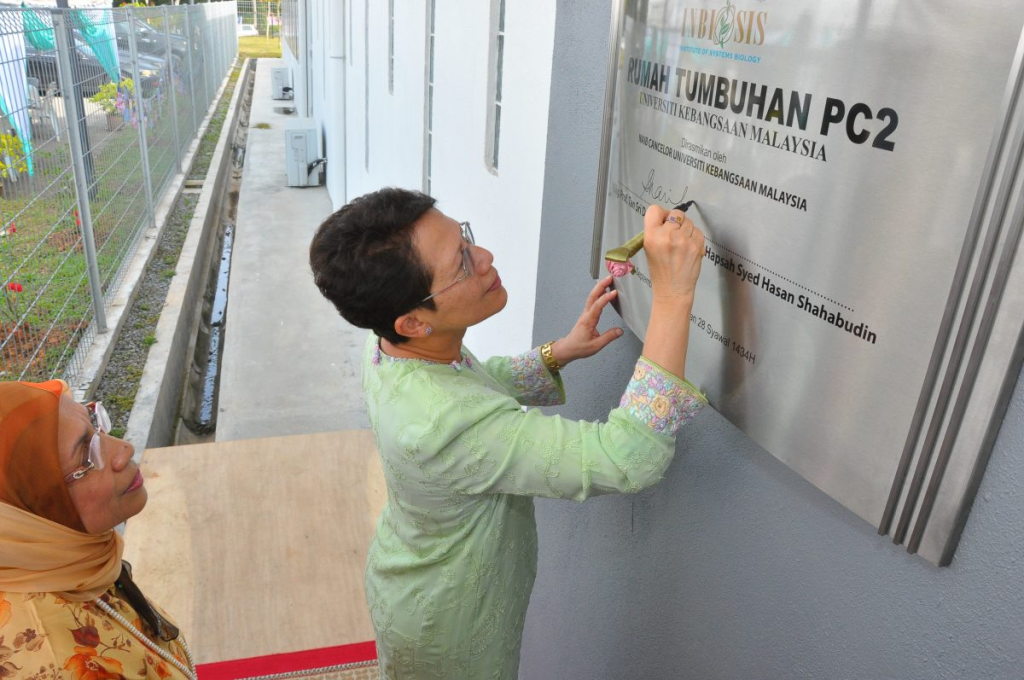

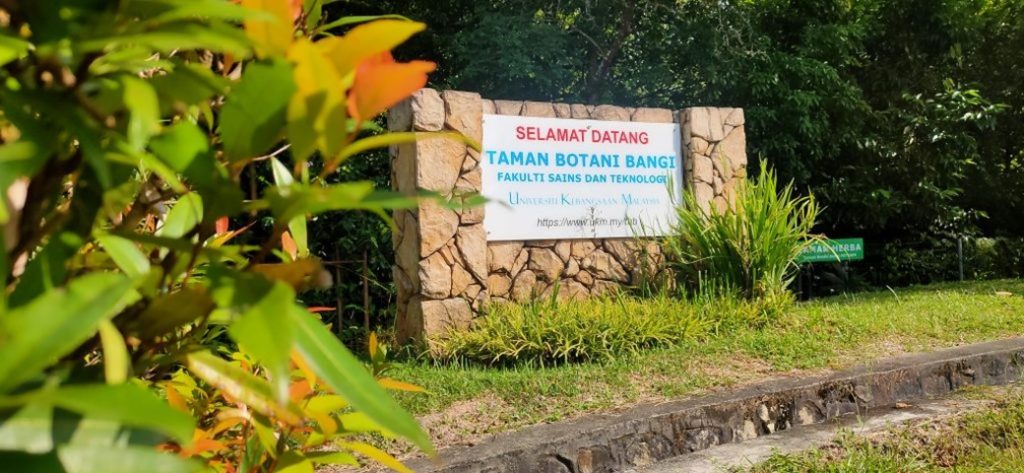

Taman Ilmu @ Chancellory
Pusat Strategi UKM has developed Taman Ilmu with the concept of an urban garden. There are many types of vegetables and herbs grown in the Chancellory UKM. This initiative is to cultivate the practice and as a sign of support for the efforts towards the Sustainable Development Goals (SDG).
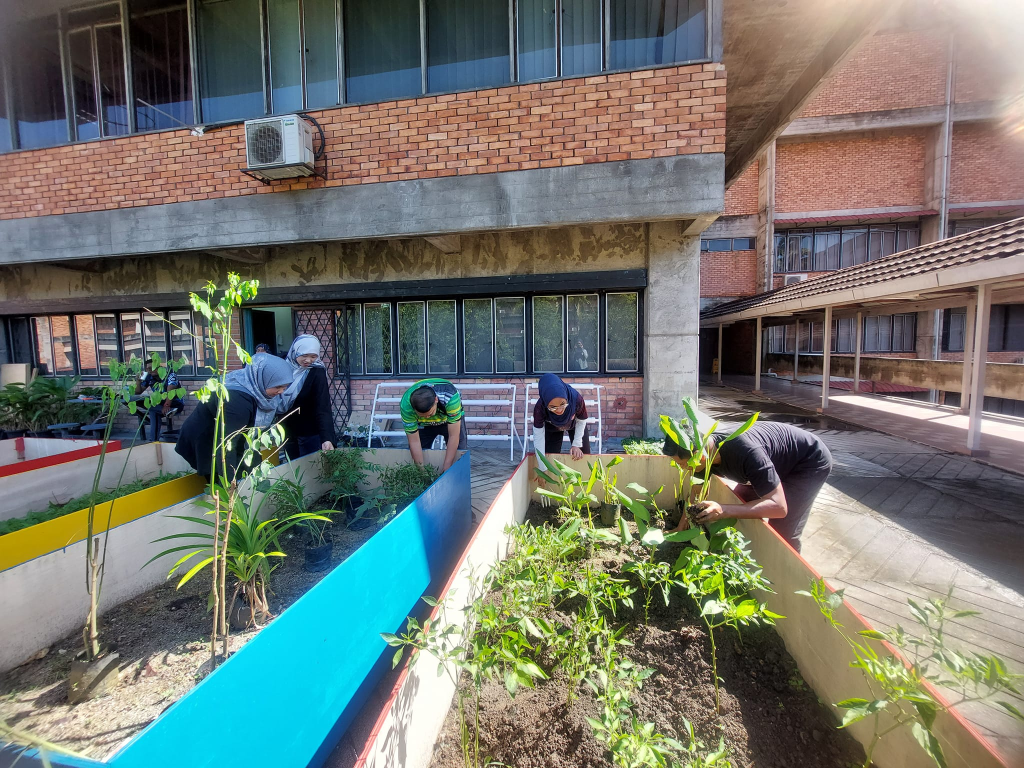
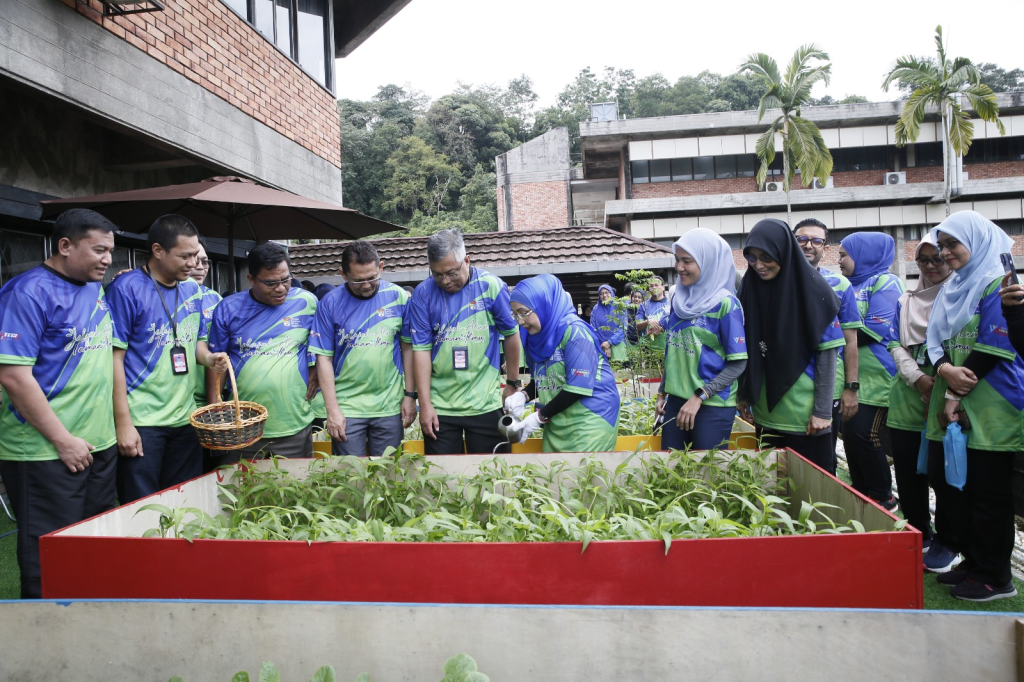

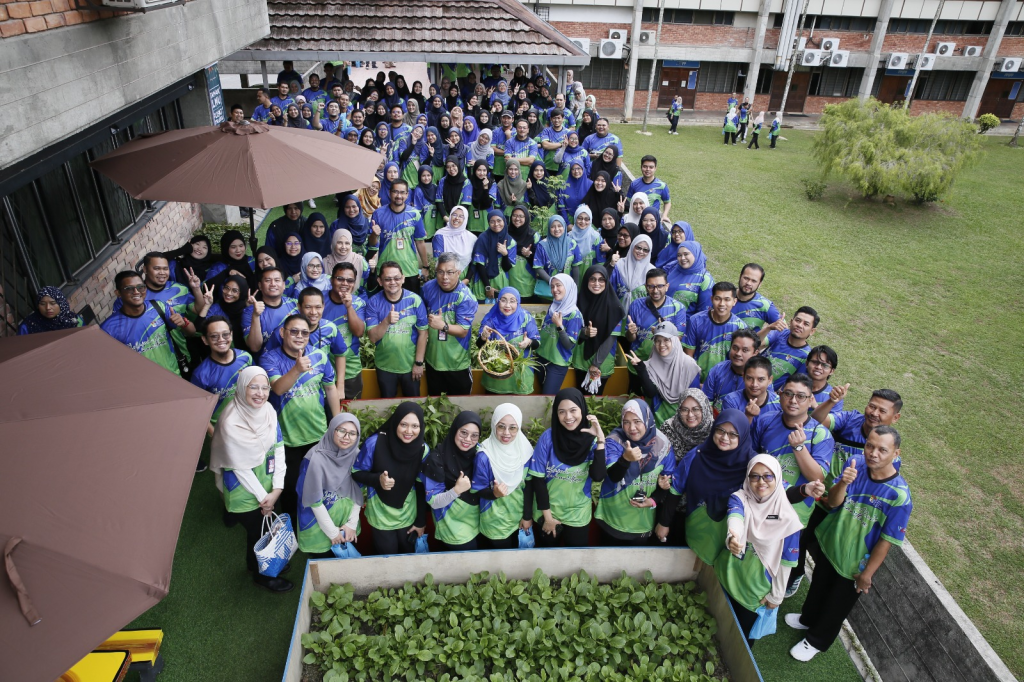
Taman Lestari UKM
Taman Lestari UKM YSD@FKAB was developed by the UKM-YSD Sustainability Chair as a hub for urban agriculture education in an effort to promote a culture of sustainable living. This garden that is planted with various types of vegetables, such as lettuce, mustard greens, okra and sweet potato.






Museums and Galleries
- Academic Heritage Museum
- Sheikh Othman Sarawak Gallery
- Tun Ahmad Sarji Collection
- Anatomy Museum
- Istana Puteri Bongsu
- ATMA Rare Collection
- Langkawi Research Center Gallery
- Natural History Gallery
1. Academic Heritage Museum
The UKM Academic Heritage Museum is another new landmark on this historic campus. The establishment of this museum was driven by the rapid development, success and achievements in various academic and management fields since the establishment of UKM on May 18, 1970. Every day that passes is a series and a memory for UKM that has succeeded through various challenges in its efforts to stand strong as a center of excellence knowledge.
The existence of this Museum will empower and enliven the image of the treasures of knowledge heritage, the results of thought, research and innovation of UKM scholars and scientists. The Academic Heritage Museum is also a continuation of the UKM Gallery located on the second floor of the Chancellery Building which was inaugurated on 29 July 2000 in conjunction with UKM’s 30th Anniversary. The gallery focuses on the history of UKM’s struggle and establishment, while the Academic Heritage Museum highlights the development, success and glory of UKM at the age of 38.




2. Sheikh Othman Sarawak Gallery
The Sheikh Othman Sarawak Chair is an initiative jointly established by UKM and the Islamic Council of Sarawak (MIS). His work began immediately after the success of the joint organisation of Nadwah Ulama Nusantara (NUN VIII) between UKM and MIS in Kuching on 23 to 25 October 2018. Most interestingly, the resolution of NUN VIII suggested the need for an Islamic scholarship chair to be established at IPT to deal with issues- issues related to civilization, progress and development of the Muslim community, especially for the state of Sarawak.
The Islamic scholarship chair was named the Sheikh Othman Sarawak Chair after the name of a prominent scholar who came from Bumi Kenyalang. The idea of establishing an Islamic Scholarship Chair at IPT was finally read by the Chairman of the Sarawak Islamic Council, Datu Haji Misnu Haji Taha as one of the resolutions of NUN VIII 2018 at the Official Adjournment Ceremony of NUN VIII on Thursday 25 October 2018 corresponding to 16 Safar 1440H in front of Tuan His Excellency Yang Di-Pertua Negeri Sarawak, Tun Pehin Sri Haji Abdul Taib Mahmud. The Sheikh Othman Sarawak Chair placed at the Faculty of Islamic Studies, UKM will carry out focused research activities on the SOCIO-ECONOMIC EMPOWERMENT OF THE ISLAMIC SOCIETY OF SARAWAK. This effort is seen to be in line with the 12th Malaysia Plan and the Sarawak Digital Economy Strategy 2018-2022.



3. Tun Ahmad Sarji Collection
UKM Pro-Chancellor Tun Ahmad Sarji handed over his personal collection to UKM for the storage and reference of the public. That personal collection consists of letters, minutes of meetings, gifts, historic photographs, posters and CDs he received during his service with the Government and the corporate sector. Tun Ahmad Sarji said he chose to place his collections at UKM because the university is an institution that appreciates the legacy.


4. Anatomy Museum
The Anatomy Museum is located on the 3rd floor of the Preclinical Building, next to the faculty’s pre-clinical library is part of a shared museum with the Pathology Museum. This museum was established as one of the department’s efforts to diversify teaching methods in addition to fostering self-learning. Among the collection of specimens on display is a collection of plastination and jar specimens. To facilitate learning, specimens are displayed according to the body system starting from the body system as a whole, hands, feet, respiratory system, urinary system, endocrine system, reproductive system, cardiovascular system, thorax, abdomen and others. Some of the jar specimens are also colored and labeled to make it easier for students to identify the parts involved.



5. Istana Puteri Bongsu
The Museum Department bought Istana Puteri Bongsu fulfils the needs of the Malay World Ethnology Museum. It was first renovated in 2002 and has been stored in the Lukut Museum for 5 years. 2006 it was rebuilt in Taman Pantun, UKM. Around the palace there are lush trees making the atmosphere peaceful and comfortable, it is better known as Laman Ilmu filled with 199 trees, while each tree is completed with a verse related to the tree. It consists of herbaceous, fruit and ornamental trees.
This house has a Kitchen Module and a Mother’s House Module that are connected to the clothesline which is also the original design of the Kelantan House known as Rumah Bujang. The characteristics of the houses of the nobles are different from the residences of ordinary people, where they differ in terms of the pillars of the mother’s house, where ordinary people’s houses have 12 pillars on the module of the mother’s house, while the residences of the nobles have 16 pillars on the module. In addition, the family home in Raja also has an entrance without stairs and the floor is 8-10 feet from the ground level which is equal to the height of an elephant. Such a design is not because they keep elephants under the house, but rather it is designed to make it easier for the residents of the house to enter the house after driving with the elephant without getting off the animal. This is actually to protect the dignity and status of those who are known as members of the royal family.
The carvings on the walls also consist of flora motifs which are synonymous with Kelantan carving motifs. It is a very charming and luxurious residence for the people of Kelantan in the 1800s. This house was built with a mortise method with few nails, it also uses wood from the Cengal and Berlian types which nowadays are very difficult to obtain due to the fact that this type of wood is expensive for people to buy. habit Cengal and Berlian are hard types of wood that take a long time to process, currently only the rich are able to build houses from this type of wood.
Istana Tengku Bongsu in Taman Pantun, UKM is now a reconstruction which is only 1/3 of its originality. Many parts were not built in 2006. Therefore, the authorities have planned for construction on a comprehensive scale to maintain the construction of this palace as it was before it was renovated in 2002.




6. ATMA Rare Collection
ATMA Rare collection is a Malay collection from the entire archipelago and the Malay-Polynesian world including the Malay Collection of Sri Lanka, South Africa, Surinam Malay Language Collection and rare materials in the Dutch language (information related to the Malay language and society in the 16th century)

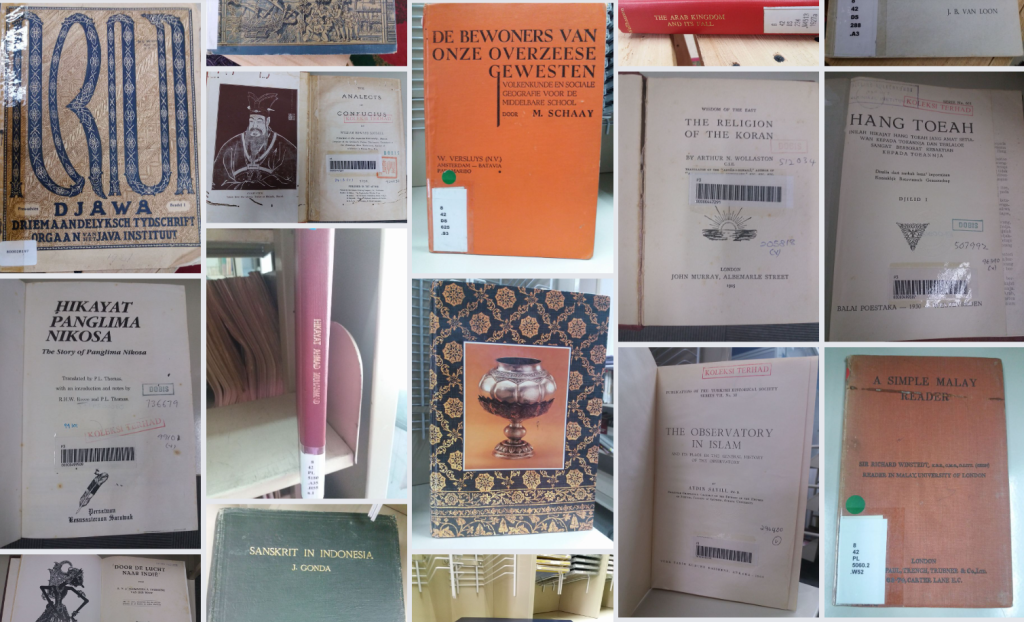
7. Langkawi Research Center Gallery
The Langkawi Research Center (PPL) is located at Tuanku Abdul Halim Mu’adzam Shah Campus, Langkawi UNESCO Global Geopark. Langkawi Research Center is a focused center under UKM’s Institute of Environment and Development (LESTARI), responsible for carrying out research and academic services related to integrated heritage conservation and geopark development.




8. Natural History Gallery
Geology Exhibition
The Geological Museum was launched in 1990. Since the establishment of the Geological Department in conjunction with the establishment of Universiti Kebangsaan Malaysia itself in 1970, efforts to develop this museum took time to complete, especially the collection of local mineral, rock and fossil samples.
To date, the total number of samples collected is over 7000 samples covering the Geological Museum, Geological Gallery and Rock Archives.



Seed Bank Exhibition
Seed Bank of Universiti Kebangsaan Malaysia (UKMSB) is one of the units under the Natural History Museum, Faculty of Technology Science. This unit serves as a conservation center and preservation of plant genetic resources such as paddy, fruits and vegetables in particular used in research in UKM.
This unit keeps various types of crop access including traditional varieties, wild varieties, modern cultivars and biakasonic droplets. To date, for paddy crops alone, UKMSB has more than 100 traditional varieties, 50 modern cultivars, and more than 600 droplets. Additionally, UKMSB also has over 25 chilli accesses, 30 salad access, 30 access tails, 10 nut access, and various vegetable access and other fruits. These accessories are obtained through research activities, field work and seed sharing with individuals / research institutions / education from within and outside the country.
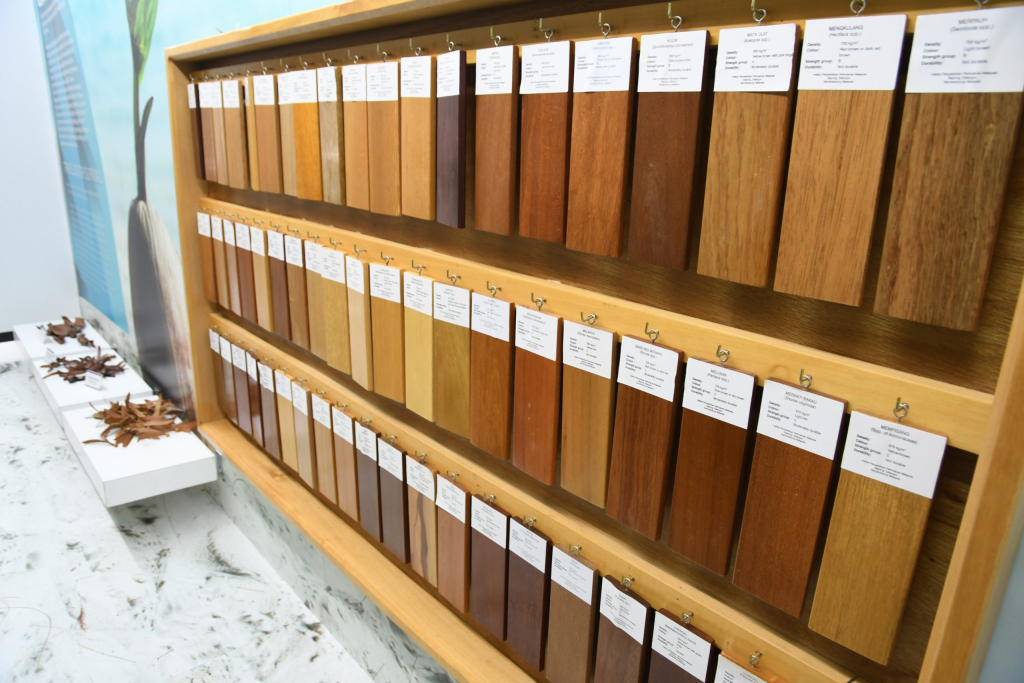

Zoology Exhibition
Malaysian National University Zoological Museum is one of the units under the Museum of Natural History, Faculty of Science and Technology. The museum is also a collection center and a vertebrate specimen repository, where to date, the museum has reached 6000 specimens as a whole.
The zoological museum has a diverse and unique collection of specimens of marine life, fish, amphibians, reptiles, birds and mammals.These specimens are preserved since the 80s and there are also several specimens from the 70s, where these specimens are preserved using several curing methods such as curing methods in formalin and alcohol solution of ethanol, taxidermy, bone and diaphonized.
The Zoological Museum was established as a collection center collection of vertebrates specimens as a result of research by researchers and UKM students and as a reference center for researchers and people who are interested in biodiversity diversity.



Amphibian Exhibition
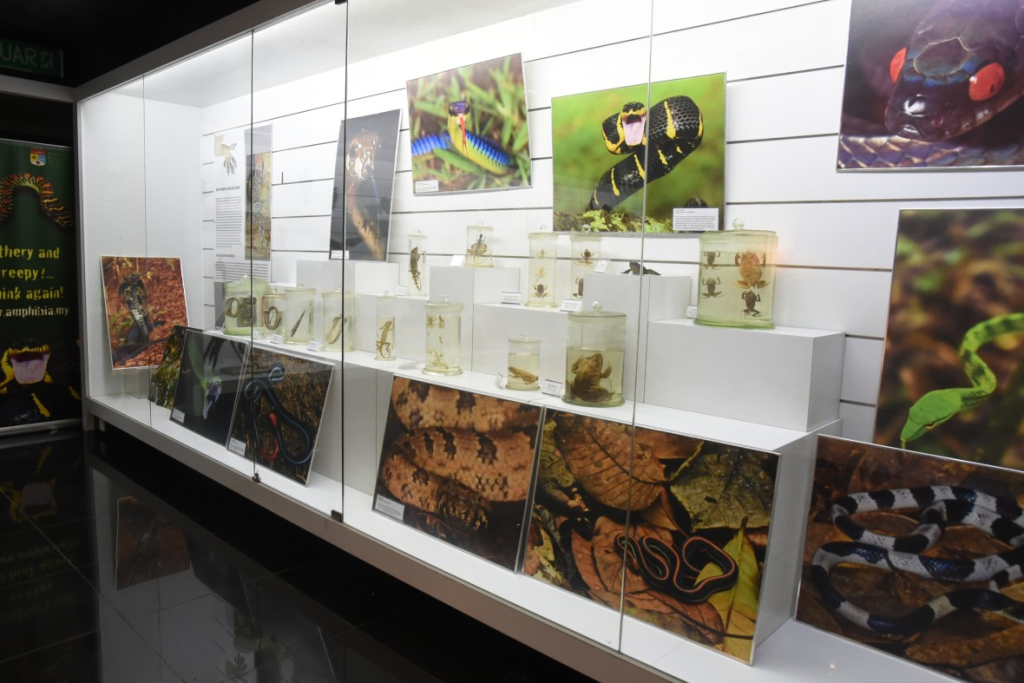


Insects Exhibition
Centre for Insect Systematics (CIS) of Universiti Kebangsaan Malaysia (UKM) is one of its kind in Southeast Asia. CIS is also one of the UKM’s centres of excellence. CIS was established in 1993 following the Agenda 21 of the Rio Declaration. Since its inception, the centre has collection of over 100,000 specimens, of which >120 are type specimens. CIS has its own world-circulated journal SERANGGA, which is dedicated to publication of research findings in insect systematics and diversity, particularly of Southeast Asia as well as other parts of the world.



Fieldwork Preliminary Study of Kuala Melaka River Rehabilitation for the Conservation of Fireflies for Tourism Purposes
Organized by: Langkawi Development Authority (LADA), Faculty of Science and Technology (FST-UKM) and Langkawi Research Center (PPL-UKM)
Date: 17 – 18 November 2021
Place: Sungai Kuala Melaka, Kg. Kuala Muda, Langkawi
Last November 17 and 18, a field work was carried out in Sg. Kuala Melaka, Kg. Kuala Muda, Langkawi, which used to be known as “River Park Langkawi”. This field work is a preliminary study of the rehabilitation of Sungai Kuala Melaka for the conservation of fireflies. This study includes identifying the species of fireflies that already exist, as well as the identification of vegetation types, which are model trees for the fireflies found in the location. The main purpose of this study is as a basis for development planning in Sungai Kuala Melaka where this “firefly viewing event” can be used as a new tourist attraction in Langkawi UNESCO Global Geopark (LUGGp). The research experts involved are Prof. Associate Dr. Norela Sulaiman (Head of Bukit Fraser Research Center, UKM) and Dr. Shamsul Khamis (PPL-UKM Associate Fellow). Also assisting throughout the study were staff from the LADA Tourism Division and PPL-UKM.
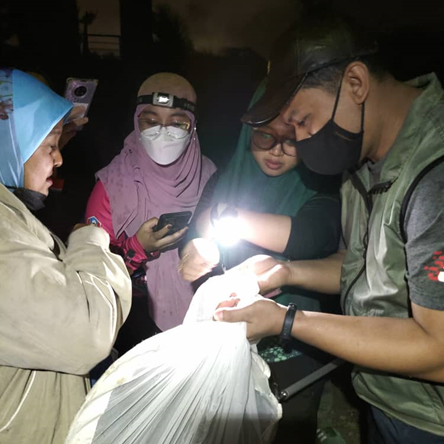
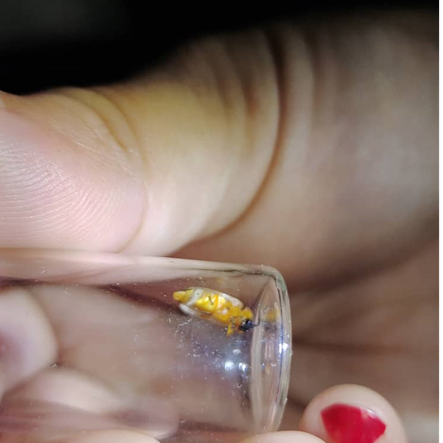

Bat Research in the Langkawi Islands
Organized by : Langkawi Research Center (PPL)
Date: 16 – 23 January 2016
Place: Langkawi Research Center (PPL) and around the Langkawi Islands
A bat research field work under the management of Dr. Juliana Senawi was held on 16 – 23 January 2016 in several islands around the Langkawi Islands. This research is a study for the Sustainable Development of Heritage Resources for the Well-being of Local Communities project (AP-2014-007). This research work for about a week aims to identify the bat and kluang species found in the Langkawi Islands. Some fog net traps have been installed on Dangli Island and Lalang Island which are identified as the home of the kluang kluang. Counting of kluang species is also recorded. In addition to Dangli Island and Lalang Island, several places around the Langkawi Islands have also been identified such as Tok Diang Cave, Pasir Dagang Cave and Dayang Bunting Bat Cave. This study was also assisted by UKM students, veterinarians and local tour guides.

Setting and Infrastructure
Basic information of the university policy towards green environment. Include space for greenery and in safeguarding environment, as well as developing sustainable energy.

Universiti Kebangsaan Malaysia (UKM)
Universiti Kebangsaan Malaysia (UKM) is located in an urban area which has a high rate of development. UKM Bangi campus located at Kajang District located in the state of Selangor, Malaysia. It has a total population of 342,657 with a total area of 101.9 km² and that makes it a high density area with 3,364 inhabitants per km².
Universiti Kebangsaan Malaysia (UKM) Campus Bangi and Living Lab

Langkawi Research Centre, UKM

EKOMAR, Tanjung Resang, Mersing Research Centre

Fraser Hill Research Centre

Kuala Pilah Research Centre

Palm Oil Plantation in Kuala Pilah

Palm Oil Plantation in Reserve Forest, UKM

Supporting Land Ecosystems Through Education
UKM support and organize events, particularly its students associations (Table 1) and faculties/institutes/centers (Table 2) on promoting conservation and sustainable land utilization, including forest and wild land. There are more than 10 events held on this issue, and had received great recognition by community inside and outside UKM.
Table 1 : Student associations-related activities on promoting conservation and sustainable utilization of the land including forests and wild land
| STUDENT ORGANIZATION | PROGRAM | EVIDENCE | |
|---|---|---|---|
| Kelab Rakan Taman | Adakah Anda Tahu? "Satu Minit Satu Info" www.instagram.com/p/CfShvtOPL5r | ||
| Kelab Rakan Taman | Pertandingan Terrarium Kreatif www.instagram.com/p/CfSfQjjJKln | ||
| EcoVolunteers UKM | Wetland Ku Indah www.facebook.com/ekorelawanukm/posts/pfbid031ZZxouDpabCDdLxUz35g3PB1WeoF7HA1vYjkq6nA9o2MKnq4Wf26FLe2DhdYR722l | ||
| EcoVolunteers UKM | Siri Modul Penjelajahan Ekosistem Ekorelawan UKM : Undang-Undang Alam Sekitar www.facebook.com/ekorelawanukm/posts/pfbid0RqBS9mSR2zF3Cfqj6UYkBeABPZp6zQtvc9pmJ51JEnrqR3wsub554b75jWyUPdkdl | ||
| Kelab SEEDS UKM | Beach Clean-up Trip 3.0 | ||
| Kelab SEEDS UKM | |||
| Video Innovation Club | Video Competition “Love Our Earth” www.instagram.com/p/Cc0W-8CveB | ||
| Video Innovation Club | Rimba Ria VIC 2022 www.instagram.com/p/CiymrePvgKV/ | ||
| UKM Biology Club | Photography Contest “Nature Snap” https://www.instagram.com/p/Cff2z0Rvf0P | ||
| UKM Biology Club | |||
| UKM Biology Club | |||
UKM Environmental Health Club | |||
UKM Environmental Health Club | |||
UKM Environmental Science Club | One Tree One Million Benefits Program www.ukm.my/ipi/penghijauan-malaysia-koperasi-prihatin-sejuta-pokok | ||
UKM Faculty of Pharmacy Student Association (PMFFAR) | UKM Green Pharmacy www.instagram.com/p/CcqH0ymPopF | ||
Table 2 : Faculties/Institutes/Centers-related activities on promoting conservation and sustainable utilization of the land including forests and wild land
| PROGRAM NAME | ORGANIZER | LEVEL | URL |
|---|---|---|---|
| MyMangrove Monthly Discourse (January 2022) with Dr. Hamdan Omar | Pusat Penyelidikan Kelestarian Alam Sekitar, Ekonomi dan Sosial (KASES-LESTARI, UKM) | International | https://www.ukm.my/aldrie/2022-mymangrove-monthly-discourse/ |
| MyMangrove Monthly Discourse (February 2022) with Dr. Ng Wei Lun | Pusat Penyelidikan Kelestarian Alam Sekitar, Ekonomi dan Sosial (KASES-LESTARI, UKM) | International | |
| Program Peningkatan Kemahiran Teknikal Skim Pegawai dan Pembantu Geosains | Jabatan Mineral dan Geosains Malaysia; Pusat Penyelidikan Langkawi (PPL-LESTARI, UKM) | National | |
| Aktiviti Lapangan Penyelidikan Kelawar di Pulau Jemuruk dan Pulau Rebak Besar, Langkawi, Kedah | Fakulti Sains dan Teknologi (FST-UKM); Pusat Penyelidikan Langkawi (PPL-LESTARI, UKM) | University | https://www.ukm.my/ppl/ms/news/kerja-lapangan-penyelidikan-kelawar-di-pulau-jemuruk-dan-pulau-rebak-besar-langkawi-kedah/ |
| MyMangrove Monthly Discourse (March 2022) with Dr. Chee Su Yin | Pusat Penyelidikan Kelestarian Alam Sekitar, Ekonomi dan Sosial (KASES-LESTARI, UKM) | International | |
| Aktiviti Lapangan Hutan Bakau Kuala Selangor Nature Park | Pusat Penyelidikan Kelestarian Alam Sekitar, Ekonomi dan Sosial (KASES-LESTARI, UKM) | National | |
| Snake Awareness and Basic Handling Course | Pusat Penyelidikan Langkawi (PPL-LESTARI, UKM); Langkawi Geopark Guide Club | National | |
| MyMangrove Monthly Discourse (April 2022) with Dr. Maizah Abdullah | Pusat Penyelidikan Kelestarian Alam Sekitar, Ekonomi dan Sosial (KASES-LESTARI, UKM) | International | |
| MyMangrove Monthly Discourse (May 2022) with Dr. Izwandy Idris | Pusat Penyelidikan Kelestarian Alam Sekitar, Ekonomi dan Sosial (KASES-LESTARI, UKM) | International | |
| Aktiviti Lapangan Hutan Bakau Kuala Selangor Nature Park | Pusat Penyelidikan Kelestarian Alam Sekitar, Ekonomi dan Sosial (KASES-LESTARI, UKM) | National | |
| Aktiviti Lapangan Sungai Selangor dan Hutan Bakau Kuala Selangor Nature Park | Pusat Penyelidikan Kelestarian Alam Sekitar, Ekonomi dan Sosial (KASES-LESTARI, UKM) | National | |
| MyMangrove Monthly Discourse (June 2022) with ChM. Dr. Jeyanny Vijayanathan | Pusat Penyelidikan Kelestarian Alam Sekitar, Ekonomi dan Sosial (KASES-LESTARI, UKM) | International | |
| Pelancaran Projek Inisiatif Pemuliharaan Hutan Bakau CIMB-UKM | Pusat Penyelidikan Kelestarian Alam Sekitar, Ekonomi dan Sosial (KASES-UKM) | National | https://www.ukm.my/kelestarian/activities/majlis-pelancaran-inisiatif-pemuliharaan-hutan-bakau-yayasan-cimb-ukm/#:~:text=Majlis%20Pelancaran%20Inisiatif%20Pemuliharaan%20Hutan,hutan%20bakau%20di%20negara%20ini |
| MyMangrove Monthly Discourse (July 2022) with Prof. Dr. Moritz Muller of Swinburne University of Technology, Sarawak | Pusat Penyelidikan Kelestarian Alam Sekitar, Ekonomi dan Sosial (KASES-LESTARI, UKM) | International | |
| Program International Bat Night | Koperasi Komuniti Kampung Kilim; Pusat Penyelidikan Langkawi (PPL-LESTARI, UKM) | National | https://www.ukm.my/ppl/en/news/program-international-bat-night-2022-2/ |
| CIMB-UKM Mangrove Conservation Initiative: Program Penanaman Pokok Bakau Siri 2 | Pusat Penyelidikan Kelestarian Alam Sekitar, Ekonomi dan Sosial (KASES-LESTARI, UKM) | National | |
| MyMangrove Monthly Discourse (August 2022) with Assoc. Prof. Dr. Siti Aisah Alias of Institute of Ocean and Earth Sciences (IOES), Universiti Malaya | Pusat Penyelidikan Kelestarian Alam Sekitar, Ekonomi dan Sosial (KASES-LESTARI, UKM) | International | |
| Kursus Teknik dan Pengurusan Herbarium | Pusat Penyelidikan Langkawi (PPL-LESTARI, UKM); Lembaga Pembangunan Langkawi (LADA) | University | |
| Aktiviti Lapangan Kajian Pemantauan Populasi Kelawar di Gua Kelawar, Kilim, Langkawi, Kedah | Fakulti Sains dan Teknologi (FST-UKM); Pusat Penyelidikan Langkawi (PPL-LESTARI, UKM) | University | |
| Aktiviti Lapangan Kajian Biodiversiti Kelawar di Pulau Tuba dan Pulau Dayang Bunting (Selat Bagan Nyior), Langkawi, Kedah | Fakulti Sains dan Teknologi (FST-UKM); Pusat Penyelidikan Langkawi (PPL-LESTARI, UKM) | University | |
| CIMB-UKM Mangrove Conservation Initiative: Program Penanaman Pokok Bakau Siri 3 | Pusat Penyelidikan Kelestarian Alam Sekitar, Ekonomi dan Sosial (KASES-LESTARI, UKM) | National | |
| MyMangrove Monthly Discourse (September 2022) with Dr. Mohammad Rozaimi of FST-UKM | Pusat Penyelidikan Kelestarian Alam Sekitar, Ekonomi dan Sosial (KASES-LESTARI, UKM) | International | |
| CIMB-UKM Mangrove Conservation Initiative: Program Penanaman Pokok Bakau Siri 4 | Pusat Penyelidikan Kelestarian Alam Sekitar, Ekonomi dan Sosial (KASES-LESTARI, UKM) | National | |
| MyMangrove Monthly Discourse (October 2022) with Dr. Louisa Ponnampalam & Dr. Vivian Kuit of MareCet | Institut Alam Sekitar dan Pembangunan (LESTARI-UKM) | International | |
| 17th Regional Geoscience Congress of Southeast Asia (XVII GEOSEA2022) in Conjunction with the 34th National Geoscience Conference | Geological Society of Malaysia; Board of Geologist Malaysia; Pusat Penyelidikan Langkawi (PPL-LESTARI, UKM) | International | |
| MyMangrove Monthly Discourse (November 2022) with Dr. Nur Hazlin Hazrin Chong of FST-UKM | Institut Alam Sekitar dan Pembangunan (LESTARI-UKM) | International | |
| INBIOSIS Webinar Series - Osteoprotective Effects of Green and Black Tea Polyphenols on TNF Induced Inflamation in Bone Cell | INBIOSIS, UKM | National | |
| Penaksiran Risiko Bahan Kimia kepada Kesihatan (CHRA) di Makmal INBIOSIS | INBIOSIS, UKM | University | |
| Community-based Environmental Education Programs and Forest Restoration | IPI, UKM | National | |
| Persidangan STACLIM | IPI, UKM | International | https://www.ukm.my/staclim/ |
| Kerja Lapangan Penyelidikan di Danum Valley Conservation Area, Lahad Datu, Sabah | IPI, UKM | National | https://www.ukm.my/ipi/wp-content/uploads/2022/08/Buletin-IPI-2022-Volume-11.pdf page 22 |
| Airborne LiDAR Survey (Kota Kinabalu Sabah, dan Lahad Datu Sabah) | IPI, UKM | National | |
| Colloquium | IPI, UKM | University | |
| Program Hari Denai Alam, Melestarikan Alam | Fakulti Sains dan Teknologi (FST-UKM); Pusat Penyelidikan Langkawi (PPL-LESTARI, UKM) | National | https://www.ukm.my/ipi/news/program-hari-denai-alam/ |
| ICAMME | International Islamic University Malaysia | International | |
| Bengkel Training of Trainers (ToT) Penghijauan Malaysia | IPI,UKM, Angkasa | National | https://www.ukm.my/kelestarian/activities/bengkel-tot-penghijauan-malaysia-koperasi-prihatin-sejuta-pokok/ |
| Program Knowledge Sharing & Exchange Visit TESSA Pahang -Penilaian Perkhidmatan Ekosistem Budaya - Tasik Chini | PPTC, Pahang | National | https://web.facebook.com/photo?fbid=881071840237036&set=pcb.881081083569445 |
| Bengkel Konservasi Teratai di Tasik Chini | PPTC, Pahang | University | https://web.facebook.com/photo/?fbid=7957949190911983&set=pcb.7958011994239036 |
| 34 th Fraser's Hill International Bird Race | PPBF, PAHANG | International | https://web.facebook.com/photo?fbid=778424767312153&set=pcb.778424963978800 |
| Program EduPelancongan | Taman Botani UKM | https://m.facebook.com/story.php?story_fbid=pfbid02Yo87soqrnmQcRFNoVM3TD35yD2RC8uXqwBWDW8kaMhhwyAgqCWYYQJBTv9aqAkKEl&id=100000579443156&mibextid=Nif5oz |
Supporting land ecosystems through action
UKM has a policy to reduce the impact of alien species on campus, which is the National Policy on Biological Diversity 2016-2025
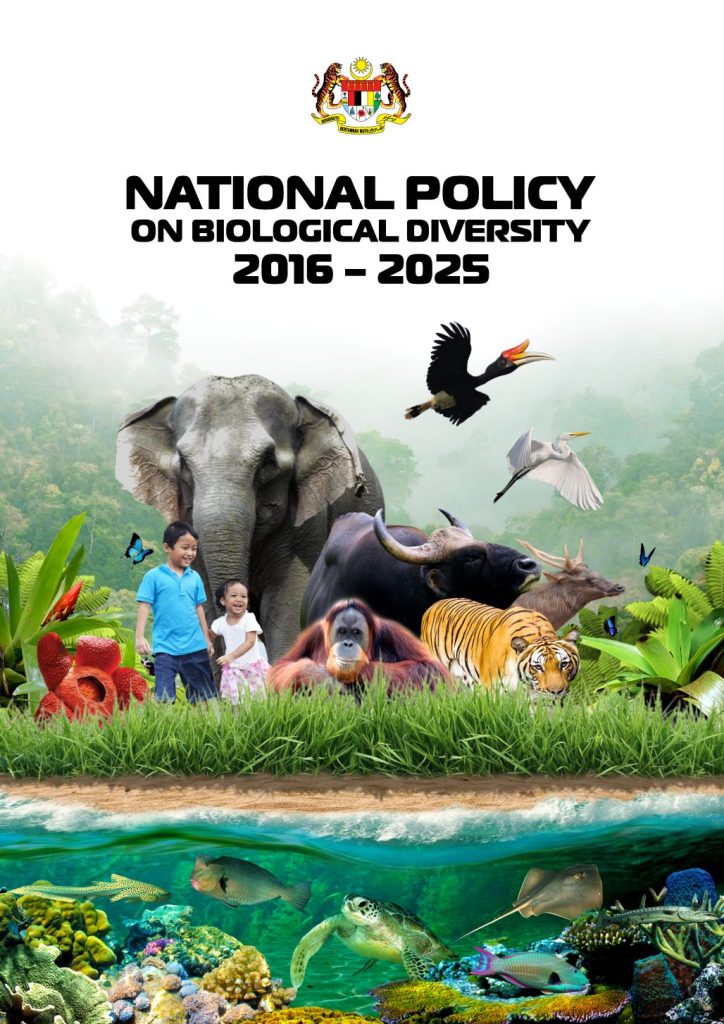
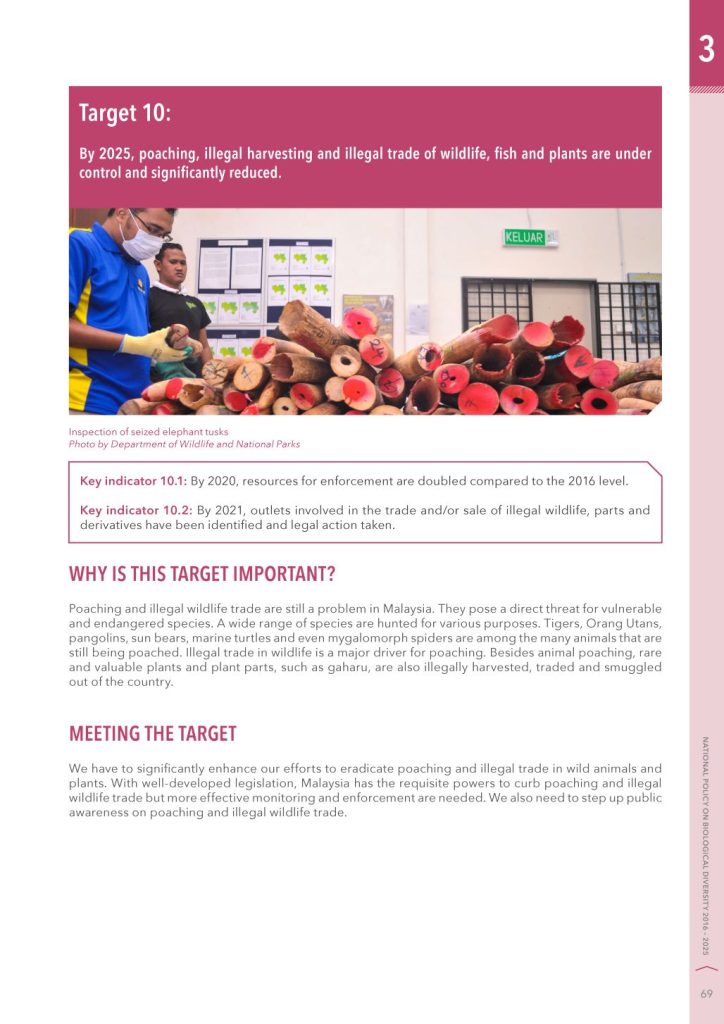
In page 71 under Target 11, this policy has stated possible measures to be taken to prevent the invasion of alien species to Malaysia, requiring integrated approach of education, monitoring and enforcement as well as targeted programmes to eradicate species that present a high risk.



UKM staffs capturing invasive species on campus
Supporting land ecosystems through education
UKM has conducted continuous campus programs for conservation of plant (flora), animal (fauna) and genetic resources for food and agriculture secured in either medium or long-term conservation facilities. In UKM, we have established four living labs (Langkawi Research Center, Chini Lake Research Center, Fraser Hill Research Center and Marine Ecosystem Research Center) for conservation. In addition to this, conservation efforts are also done in the Botanical Garden UKM (Taman Botani UKM) that is equipped with a plant house (Rumah Tumbuhan) and Green House (Rumah Hijau).
We had successfully planned and implemented 10 programs (refer to Table 3) to conserve biodiversity including flora and fauna and genetic resources for food and agriculture. The conservation programs include species conservation programs such as lotus flower, shorea plant, corals, and various flora and fauna in UKM, and publication of books related to conservation by UKM researchers. UKM’s efforts in conservation works are as stated in Table 3.
Awareness Programs & Campaigns
Increase Awareness about Importance of Palm Oil
The CEO Day@UKM program organized by the Faculty of Science and Technology (FST), Universiti Kebangsaan Malaysia (UKM) and the Malaysian Palm Oil Council (MPOC) aims to increase awareness of the importance of palm oil to the country and society.
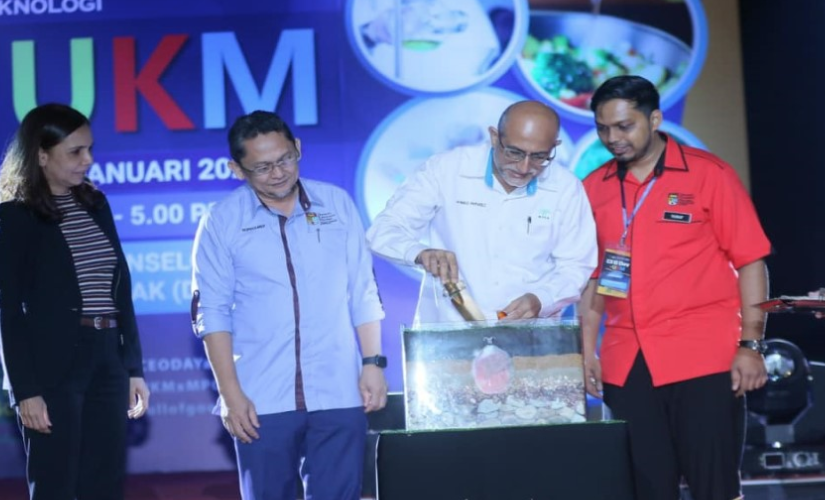
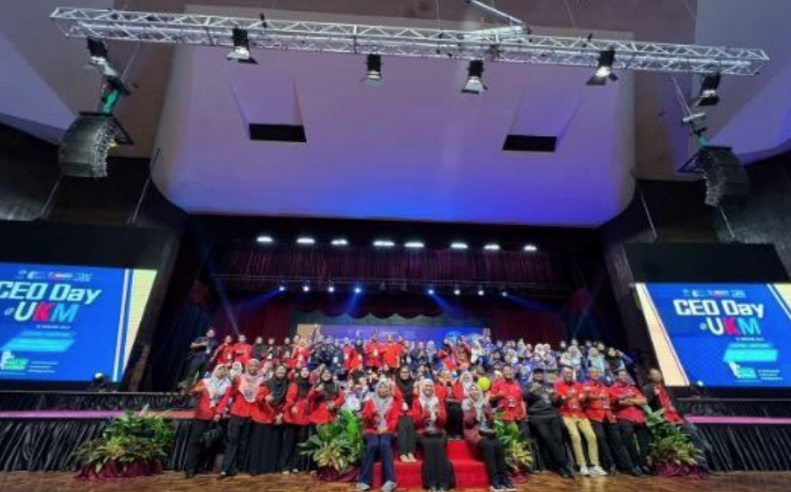
Climate Action Festival@UKM
UKM in an effort to inculcate sustainability in the UKM-YSD Sustainability Chair, Faculty of Engineering and Built Environment, Universiti Kebangsaan Malaysia (UKM) in collaboration with the Climate Change Institute (IPI), Strategy Center, MPOB-UKM Endowment Chair and Angkatan Koperasi Kebangsaan Malaysia Berhad (ANGKASA) organized the Climate Action Festival@UKM program and the Launch of the MyIKLIM Database System to provide awareness, education and spread knowledge of the importance of climate change and oil palm sustainability to the industry and the community.


Tube Well
A technology to obtain drinkable water from underground soil called ‘The TUBE WELL’ was invented by UKM lecturers. The technology was invented to help people from rural area that does not get commercial water supply. The Tube Well was used by the residents of Kampung Labu Lanjut, Sepang, Selangor to obtain drinkable water.
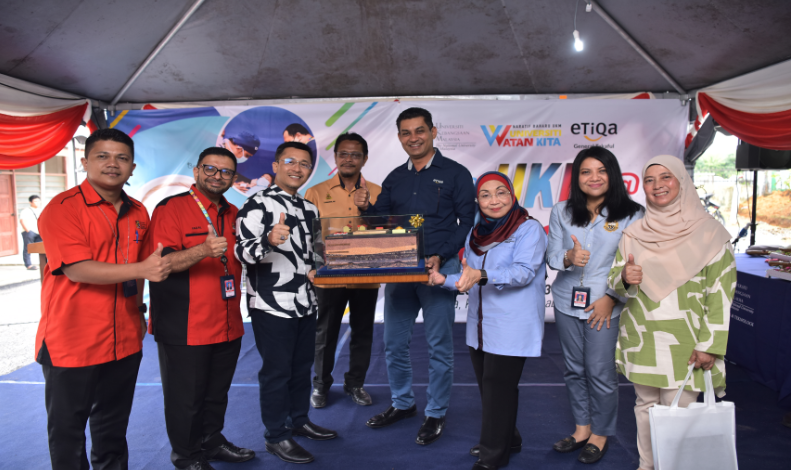

Collaboration with Etiqa General Takaful Berhad for Construction of Tube Well
Collaboration with Etiqa General Takaful Berhad regarding the construction of ‘Tube Wells’ and water tanks at As-Syakirin Mosque, Kampung Baru Lanjut, Salak Tinggi Sepang.


Carbon Footprint Reduction Program
UKM collaborates with the Selangor state government in an effort to reduce carbon emissions in Malaysia. The Selangor State Carbon Footprint Reduction Program Towards Sustainability held recently on the bank of the Langat River. This program was held to improve environmental sustainability, especially in the state of Selangor.
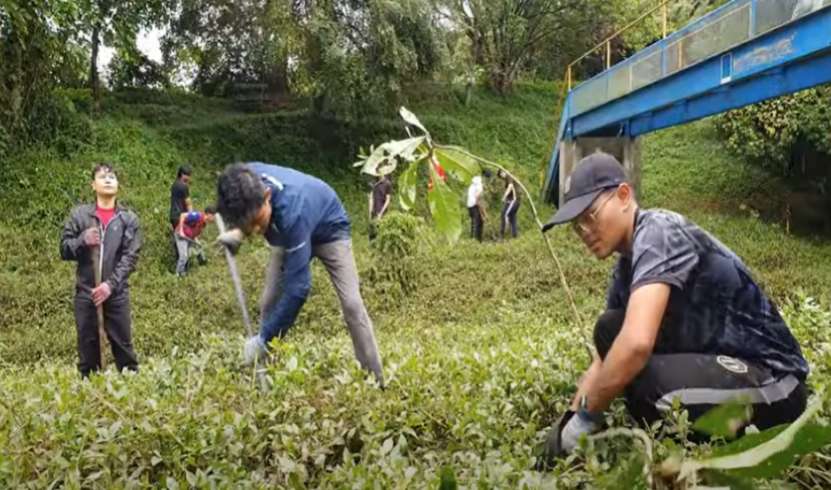

Program to Reduce the Impact of Plastic
Researchers from the Faculty of Engineering and the Built Environment (FKAB) conducted a Program to Reduce the Impact of Plastic on the Environment Through the 5R Module (Reject, Reduce, Reuse, Recycle & Recover) involving 71 secondary schools around the State of Kedah.


The Eco-Volunteer Club of UKM
Ecovolunteers together with UKM Anthropology and Sociology students went to Kg Desa Putra, Kajang to interact and see community issues (waste management). An effort by the university to empower the community through student activities. Providing input and sharing with the community regarding recycling practices.


Kuala Lumpur Multihazard Platform
UKM researchers from the Southeast Asian Disaster Research Center (SEADPRI), Universiti Kebangsaan Malaysia (UKM) developed the Kuala Lumpur Multi-hazard Platform (KL-MHP) to better manage and convey risks in increasing disaster resilience in the city of Kuala Lumpur.


Flood Aid Mission
At the beginning of 2023, several states in Malaysia have been hit by floods, especially in the South and East Coast areas of Peninsular Malaysia. The Student Affairs Center (HEP-UKM) was aware of this matter and immediately took action by creating a Flood Operation Room and managed to gather 3000 flood volunteers.
Among the initiatives taken is the giving of Rahmah Baskets and cash amounting to a total of RM23,200 to help UKM students affected by the flood disaster. The Flood Operations Operations Room was also assisted by the UKM Student Union, the Native Student Association and the Student Volunteer Club.




Agrotek Entrepreneur Development Program Site Visit
Following on from the Agrotech Entrepreneurship Development Program (Urban Agriculture), the Ministry of Higher Education (KPT) has chosen UKM as the location for a site visit to an agrotech agricultural project being worked on by 10 UKM students.
The purpose of this visit is to obtain input and progress in the implementation of the program carried out by the students. The implementation of the agricultural project is divided into three urban agricultural projects, namely eggplant fertigation, rock melon hydroponics and oyster mushrooms.
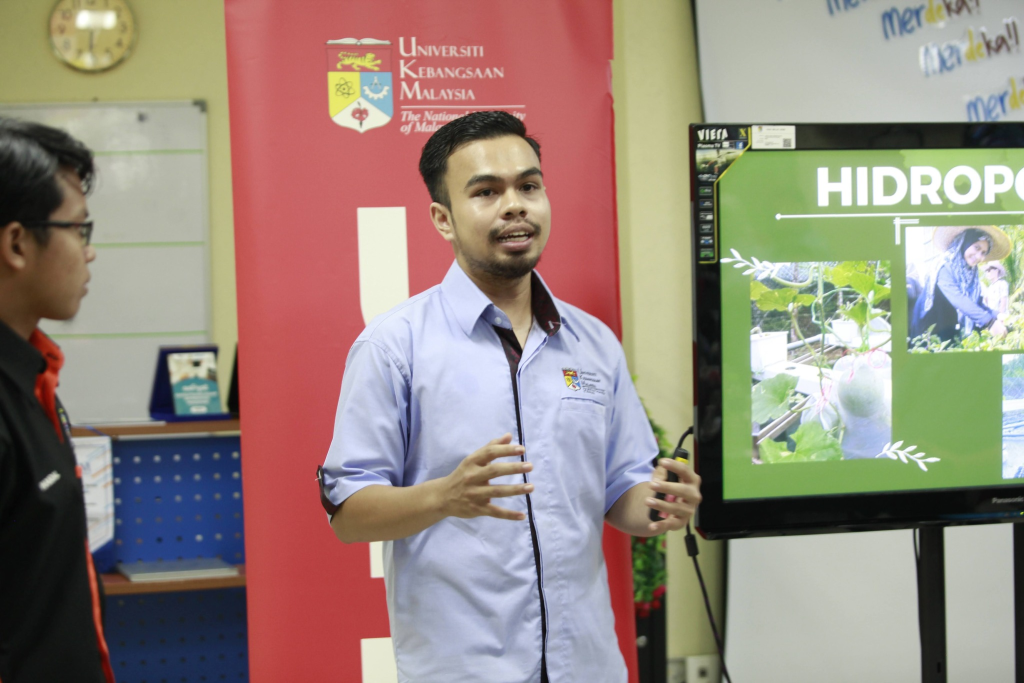
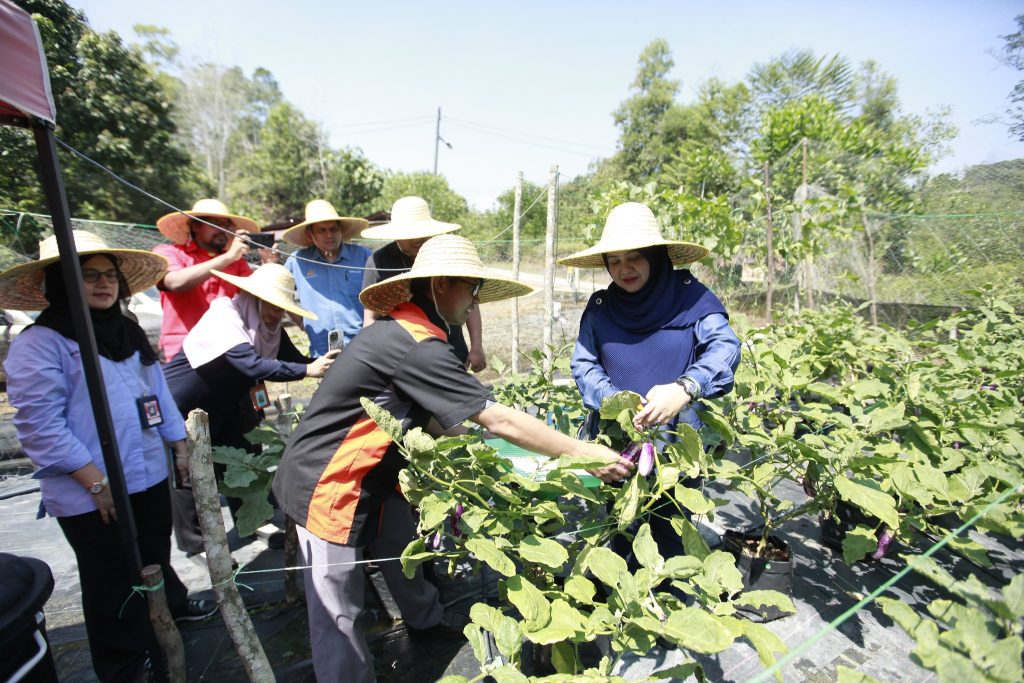
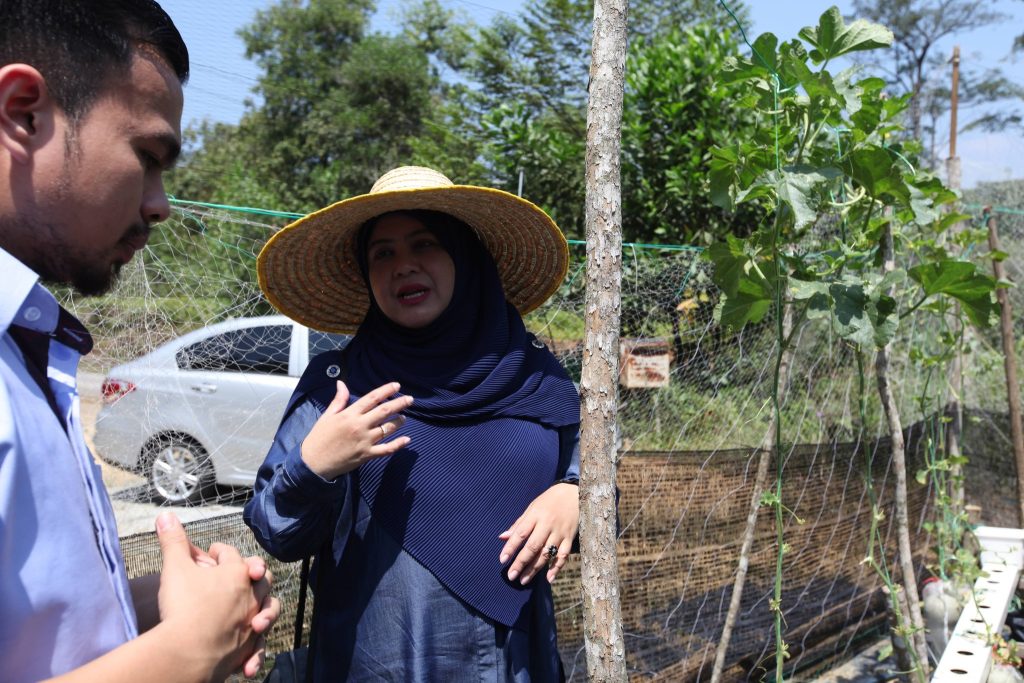
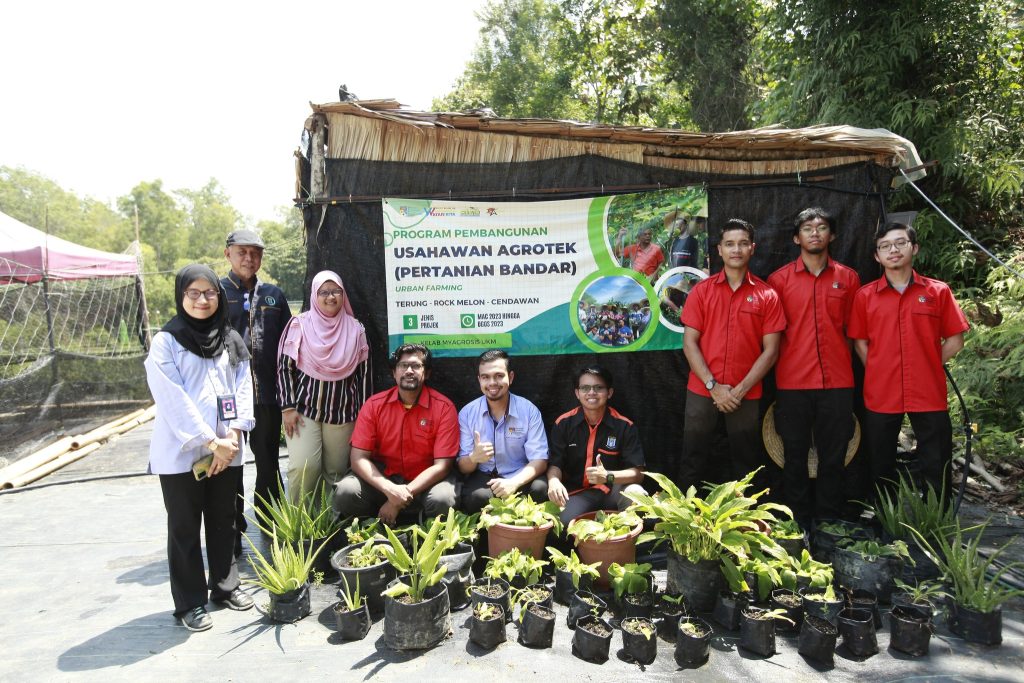
Land Sensitive Waste Disposal
UKM Recycling Center
UKM has a dedicated recycling center situated at the main campus that also serves the surrounding communities. The building itself is designed to be eco-friendly. The main projects implemented are related to waste separation, recycling, composting, legislation, bin monitoring system, biogas and education and awareness of UKM citizens.



